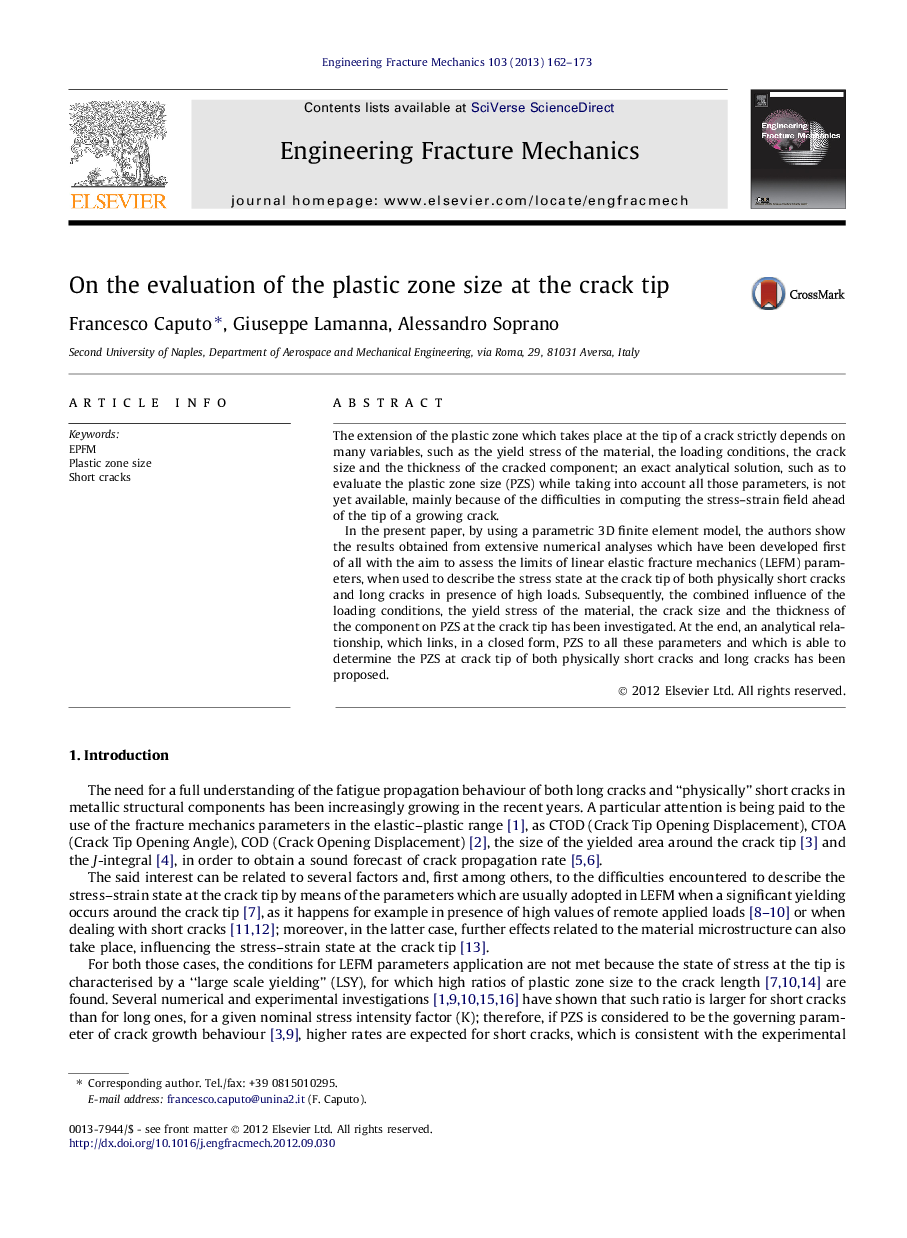| Article ID | Journal | Published Year | Pages | File Type |
|---|---|---|---|---|
| 770471 | Engineering Fracture Mechanics | 2013 | 12 Pages |
The extension of the plastic zone which takes place at the tip of a crack strictly depends on many variables, such as the yield stress of the material, the loading conditions, the crack size and the thickness of the cracked component; an exact analytical solution, such as to evaluate the plastic zone size (PZS) while taking into account all those parameters, is not yet available, mainly because of the difficulties in computing the stress–strain field ahead of the tip of a growing crack.In the present paper, by using a parametric 3D finite element model, the authors show the results obtained from extensive numerical analyses which have been developed first of all with the aim to assess the limits of linear elastic fracture mechanics (LEFM) parameters, when used to describe the stress state at the crack tip of both physically short cracks and long cracks in presence of high loads. Subsequently, the combined influence of the loading conditions, the yield stress of the material, the crack size and the thickness of the component on PZS at the crack tip has been investigated. At the end, an analytical relationship, which links, in a closed form, PZS to all these parameters and which is able to determine the PZS at crack tip of both physically short cracks and long cracks has been proposed.
► The authors describe the elastic–plastic state of stresses at the crack tip. ► The authors suggest the “plastic zone size” at crack tip as parameter of EPFM. ► Limits of LEFM parameters in describing short cracks behaviour have been assessed. ► “Plastic zone size” at crack tip has been analytically modelled.
